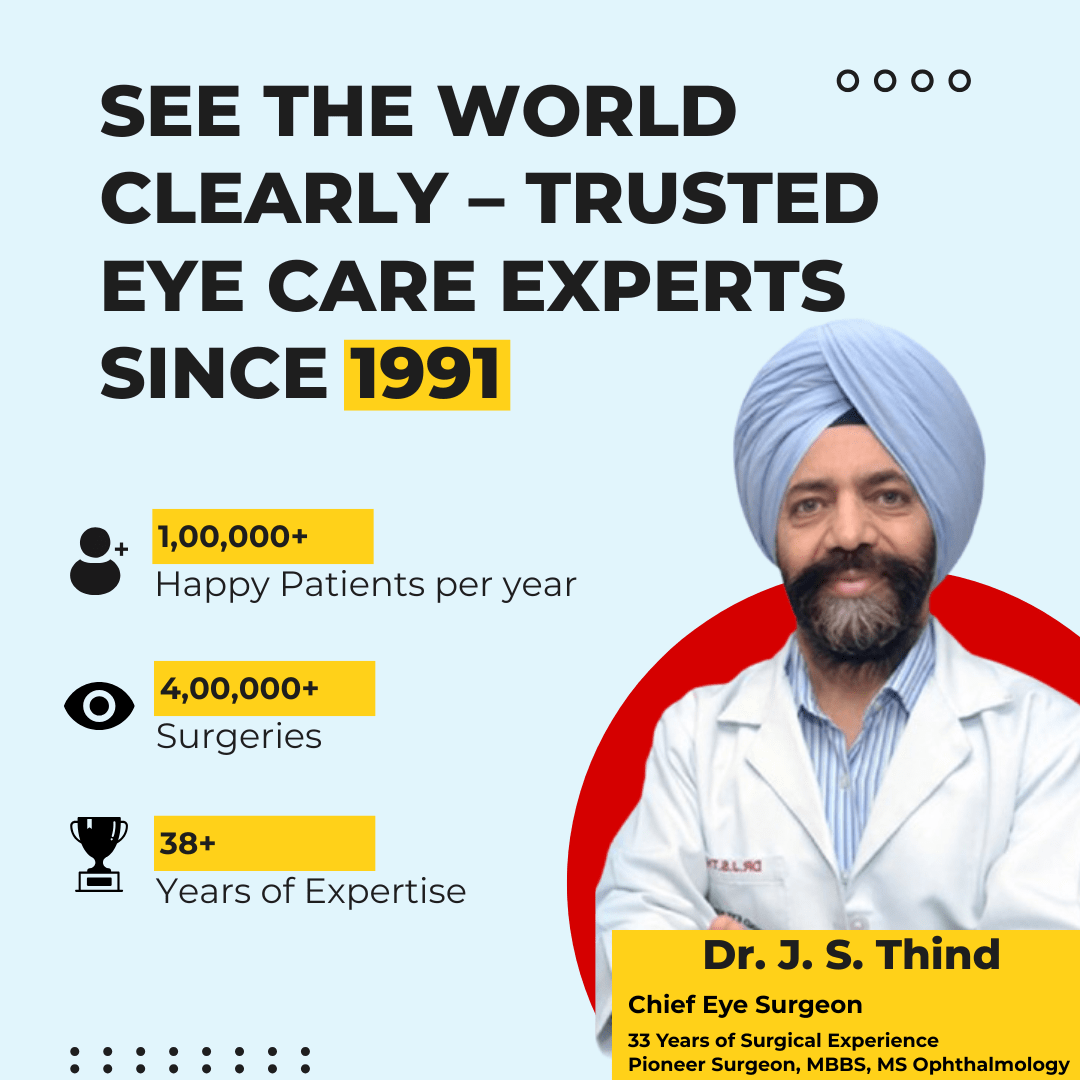In today’s digital-first world, most of us spend several hours a day staring at screens—whether it’s for work, study, entertainment, or socializing. While digital devices make life more convenient, they come with a downside: digital eye strain. Also known as computer vision syndrome, this condition can cause discomfort, reduce productivity, and affect your overall eye health.
The good news is that there are practical and effective ways to protect your eyes while maintaining your screen-centric lifestyle. In this article, the expert team at Thind Eye Hospital—recognized as the best optical store and home to the best eye doctor near you—shares top strategies for digital eye strain relief and long-term blue light protection.
1. What Is Digital Eye Strain and Its Symptoms?
Digital eye strain refers to a group of eye and vision-related problems that result from prolonged screen use. Whether you’re using a computer, tablet, smartphone, or television, the eyes are forced to work harder to focus, accommodate, and track movements on the screen.
Common symptoms include:
- Dry or irritated eyes
- Blurred or double vision
- Headaches and neck pain
- Difficulty focusing
- Eye fatigue
- Sensitivity to light
- Red eyes or watering
These symptoms may intensify after several hours of continuous screen use. If left unaddressed, they can impact sleep, reduce work performance, and lower your quality of life.
2. Tips to Reduce Digital Eye Strain
The most effective way to manage digital eye strain is by making small but consistent changes to how you use screens. Here are some expert-recommended techniques:
a) Follow the 20-20-20 Rule: Every 20 minutes, look at something 20 feet away for at least 20 seconds. This simple technique helps relax your eye muscles and reduces fatigue.
b) Adjust Your Screen Settings
- Brightness: Ensure your screen brightness matches the lighting around you.
- Contrast: Use high contrast to reduce glare and improve text readability.
- Font Size: Increase text size to avoid squinting or leaning in.
c) Blink Often and Stay Hydrated: Staring at screens reduces your blink rate by nearly 50%, leading to dryness. Make a conscious effort to blink more and drink water throughout the day.
d) Use Proper Lighting: Avoid screen glare by positioning your device away from direct light sources. Use soft, ambient lighting instead of harsh overhead lights.
e) Practice Eye Exercises: Roll your eyes gently, shift focus between objects at different distances, or close your eyes for short periods to give them a rest.
These simple adjustments can provide significant eye strain relief and reduce long-term damage.
3. The Importance of Blue Light Protection
Blue light, emitted by digital screens, penetrates deep into the eye and can damage the retina over time. While some amount of blue light is natural (from the sun), constant exposure from devices—especially at night—can disrupt sleep cycles, accelerate macular degeneration, and contribute to digital eye strain.
How Blue Light Affects You:
- Suppresses melatonin, the sleep hormone
- Increases glare sensitivity and visual fatigue
- Contributes to oxidative stress in the retina
Blue Light Protection Strategies:
- Use blue light filtering apps or built-in “Night Shift” modes on devices
- Reduce screen time before bedtime
- Wear blue light protection glasses during prolonged screen use
At Thind Eye Hospital, we offer advanced blue light filtering lenses customized to your screen habits and vision needs.
4. Best Eyewear Options for Digital Eye Strain
Choosing the right eyewear is critical for reducing strain and improving comfort during screen use. Our best optical store provides several eyewear solutions designed for digital lifestyles.
a) Blue Light Filter Glasses: These lenses block or absorb harmful blue light, reducing glare and preventing retina damage. Suitable for office workers, students, gamers, and night-shift professionals.
b) Anti-Reflective (AR) Coated Lenses: AR coating minimizes glare from screens and lighting, helping you focus better and reduce eye fatigue.
c) Customized Computer Glasses: Special prescription lenses are available for intermediate distances (20–25 inches)—ideal for desktop use and multitasking at work.
d) Photochromic Lenses: Also known as transition lenses, they adjust to ambient lighting and block UV rays and blue light, making them suitable for both indoor and outdoor digital users.
Whether you need prescription lenses or just a protective option, our expert optometrists will help you choose the best eyewear for digital eye strain relief.
5. Visit Our Optical Store for Personalized Solutions and Eye Strain Relief
At Thind Eye Hospital, we offer a full suite of services for those struggling with screen-related vision issues. As the best optical store and home to the best eye doctors near you, we provide:
- Comprehensive digital eye strain assessments
- Blue light protection consultations
- Customized eyewear and prescription solutions
- Lifestyle-based digital vision plans
- Regular follow-ups and symptom management
Our expert team understands how digital devices have become essential in modern life. That’s why we offer realistic, effective guidance tailored to your routine—whether you’re a student, IT professional, freelancer, or senior navigating technology.
Schedule an Eye Exam for Digital Vision Health
Don’t wait until eye strain becomes a serious issue. Prevention is key. If you experience any discomfort while using digital devices, it’s time to seek professional advice.
Book your eye doctor appointment today at Thind Eye Hospital—Jalandhar’s trusted name in digital eye care and blue light protection. Let us help you safeguard your vision in the digital age with personalized solutions and advanced technology.



